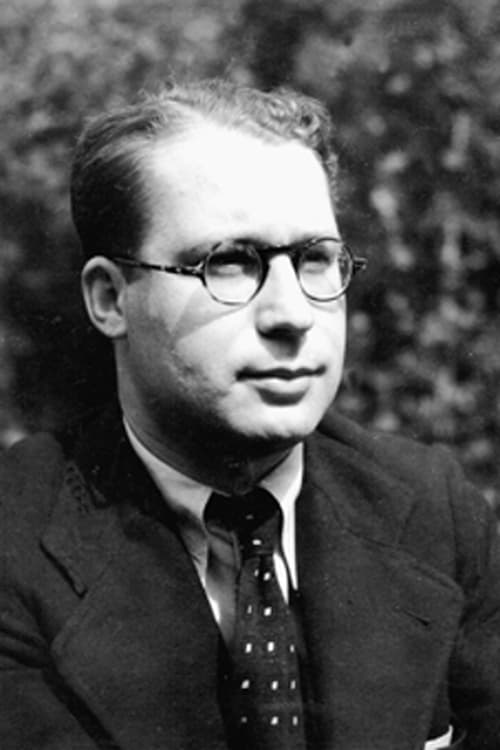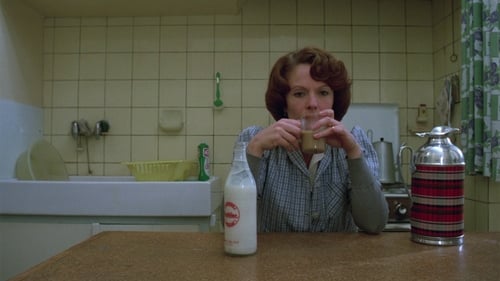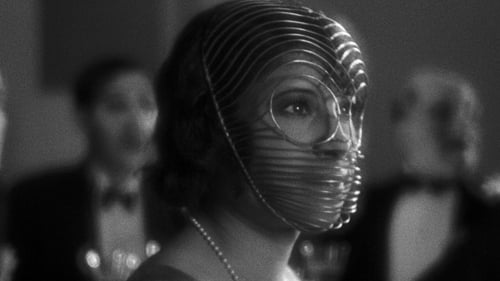
Henri Storck
Nascimento : 1907-09-05, Oostende, West Flanders, Belgium
Morte : 1999-09-17
História
From Wikipedia, the free encyclopedia
Henri Storck (1907, Ostend – 17 September 1999) was a Belgian author, film-maker and documentarist.
In 1933, he directed, with Joris Ivens, Misère au Borinage, a film about the miners in the Borinage area. In 1938, with Andre Thirifays and Pierre Vermeylen, he founded the Cinémathèque Royale de Belgique (Royal Belgian Film Archive). He was an actor in two key films of the history of the cinema: Jean Vigo's Zéro de conduite (1933) in the role of the priest, and Chantal Akerman's Jeanne Dielman, 23 Quay Commercial, 1080 Brussels (1976) in the role of a customer of the prostitute.
Jacqueline Aubenas wrote about him, in her expository work, It's been going on for 100 years: a history of the francophone cinema of Belgium: "There emerges forcefully the personality of a cineaste who is not a militant in the sense that this term had in the 1930s for Soviet directors who held an ideology, but in the sense of a generous man who will never choose the wrong side and who will be, in ethics as well as in esthetics, in the first line of battle".
Description above from the Wikipedia article Henri Storck, licensed under CC-BY-SA, full list of contributors on Wikipedia.

Himself
This distinctly personal journey into the artistic possibilities of independent film is not to be missed. Jonas Mekas, Jean-Pierre Gorin, Robert Kramer and many other visionaries and mavericks of the silver screen – as well as a book seller, a critic and a psychoanalyst – discuss what cinema has meant to them, what it is and what it could be and, implicitly, how it has changed over the 18 years in which this film was shot. Director Boris Lehman leads the charge, drawing in moments of absurdist humour and inventive camera work; he keeps things raw and spontaneous. His encounters with the now much-missed Jean Rouch and Stephen Dwoskin are particularly touching and stand testament to their personal playfulness and candour. An engaging, absorbing, epic odyssey of a movie.

Director
Film edited and directed by Luc de Heusch using images never used that Henri Storck turned in Ostend in 1930 while he was "cinégraphiste" of the city.

Self
A documentary celebrating 25 years of flemish subsidised cinema.

Self
Documentary about the Belgian (documentary) filmmaker Henri Storck.

Writer
When Anna, a twenty-eight-year-old photographer, is put in charge of a report on the restoration works at The Ostend Museum of Modern Art, she discovers by chance five paintings signed Constant Permeke, whose power and mystery move and fascinate her.She decides to embark on a quest to find out about who Permeke actually was, the places where he lived, how he worked, what experiences he went through.

Director
When Anna, a twenty-eight-year-old photographer, is put in charge of a report on the restoration works at The Ostend Museum of Modern Art, she discovers by chance five paintings signed Constant Permeke, whose power and mystery move and fascinate her.She decides to embark on a quest to find out about who Permeke actually was, the places where he lived, how he worked, what experiences he went through.

Three pioneers of documentary filmmaking – Joris Ivens, Henri Storck, and the man behind the camera, Jean Rouch – recall the early days of the documentary genre and speak about their creative methods and sources of inspiration. This lively discussion between the directors is shot in cinéma vérité style and spliced with footage from their older films.

1st Caller
Considerado como a obra-prima de Akerman, traz a atriz Delphine Seyrig no papel de Jeanne Dielman, uma jovem viúva que vive com seu filho Sylvain seguindo uma ordem imutável: à tarde, enquanto seu filho está na escola, ela cuida do apartamento e recebe os clientes.

Director
The second part of "Le monde de Paul Delvaux" (1944/1946)

Producer
Documentary about the inhabitants, both human and animal, of the Belgian Congo. Released in 1958.

Director
A portrait of the belgian writer Herman Teirlinck by Henri Storck.

Director
Smuggler's Ball is the English-language title for this French-Belgian seriocomedy. The action takes place along the borders separating Belgium, Holland and France. It is here that the worldly Pierre (J. P. Kieran) carries on a profitable smuggling operation, all the while romancing Siska (Christian Lenier), the daughter of a local customs official. Various subplots and secondary characters weave in and out as the plotline guides the viewer through the WW II years. Towards the end, the story shifts gears when the Benelux Frontier Agreement eliminates all government regulations. The film's screenplay is by Charles Spaak, himself the descendant of a Belgian political family, and thus well-versed in bureaucracy and red tape.

Director
One of the first European films commissioned by the countries that signes the Brussels treaty and filmed in the museums of Brussels, Amsterdam, Paris, London, Ghent and The Hague. The film shows, by means of 59 works of art, how painting discovered the landscape once it left the strictly religious context behind. Henri storck wrote, "We have tried to eliminate the artificiality of filming. We have tried to hide the camera in order to immerse the audience in the world of the painting and the landscape that it depicts. We want the viewer to discover the feeling of nature for himself, through the artists.... It is not our ambition to make a critical or informative work." This iconic journey from Bosch to Manet and Turner is accompanied by music by Georges Auric.

Editor
This surreal abstract film falls into three sections, or movements, the first taking place on the ground, the second in the air and the third again on the ground. In the first movement various motifs or themes are introduced, which are again picked up and developed in the third movement. Six spheres, evolved in the first movement, become the sole subject matter–or “dancers”–of the second movement, which consists of a simple type of ballet using the floor-plan choreography or traditional ballet as a basis of interest.

Producer
This surreal abstract film falls into three sections, or movements, the first taking place on the ground, the second in the air and the third again on the ground. In the first movement various motifs or themes are introduced, which are again picked up and developed in the third movement. Six spheres, evolved in the first movement, become the sole subject matter–or “dancers”–of the second movement, which consists of a simple type of ballet using the floor-plan choreography or traditional ballet as a basis of interest.

Writer
This surreal abstract film falls into three sections, or movements, the first taking place on the ground, the second in the air and the third again on the ground. In the first movement various motifs or themes are introduced, which are again picked up and developed in the third movement. Six spheres, evolved in the first movement, become the sole subject matter–or “dancers”–of the second movement, which consists of a simple type of ballet using the floor-plan choreography or traditional ballet as a basis of interest.

Director
This surreal abstract film falls into three sections, or movements, the first taking place on the ground, the second in the air and the third again on the ground. In the first movement various motifs or themes are introduced, which are again picked up and developed in the third movement. Six spheres, evolved in the first movement, become the sole subject matter–or “dancers”–of the second movement, which consists of a simple type of ballet using the floor-plan choreography or traditional ballet as a basis of interest.

Director
This was Henri Storck first art documentary, a portrait about the painter, Paul Delvaux.

Second Assistant Director
Biopic about Father Damian and his life and work on the island of Molokai.

Writer
Biopic about Father Damian and his life and work on the island of Molokai.

Director
A family film, a short summer film, made to record the joy of being together. But what a family! Léon Spilliaert, Paul Delvaux, Edgar Tytgat and his wife Maria, Luc and Paul Haessaerts. A garden, some seats and a camera that films the group of friends. They talk (given all the jollity, laughter and gestures seen it is a shame that it is a silent film). A period document only a few minutes long, a witness that puts names to faces, a reminder of a sunny afternoon. Emotion that loses itself in the moment.

Writer
From 1942 to 1944, Henri Storck composed his Symphonie paysanne, in which he describes the day to day life and rituals of the farmers on the rhythm of the seasons. The film is a poem to nature, a lyrical masterpiece on life and death, on animals and plants, on man and his labour.

Director of Photography
From 1942 to 1944, Henri Storck composed his Symphonie paysanne, in which he describes the day to day life and rituals of the farmers on the rhythm of the seasons. The film is a poem to nature, a lyrical masterpiece on life and death, on animals and plants, on man and his labour.

Editor
From 1942 to 1944, Henri Storck composed his Symphonie paysanne, in which he describes the day to day life and rituals of the farmers on the rhythm of the seasons. The film is a poem to nature, a lyrical masterpiece on life and death, on animals and plants, on man and his labour.

Producer
From 1942 to 1944, Henri Storck composed his Symphonie paysanne, in which he describes the day to day life and rituals of the farmers on the rhythm of the seasons. The film is a poem to nature, a lyrical masterpiece on life and death, on animals and plants, on man and his labour.

Director
From 1942 to 1944, Henri Storck composed his Symphonie paysanne, in which he describes the day to day life and rituals of the farmers on the rhythm of the seasons. The film is a poem to nature, a lyrical masterpiece on life and death, on animals and plants, on man and his labour.

Director
This trailer for the pleasures of living between La Panne and Le Zoute testifies to the post-1936 euphoria that came with paid holidays, with sun and rest for everybody.

Editor
December 30, 1938, the day of Emile Vandervelde's funeral. Belgium is in mourning and pays tribute to a great militant, the leader of the Belgian Labour Party, a statesman and a key figure in international socialism.

Director
December 30, 1938, the day of Emile Vandervelde's funeral. Belgium is in mourning and pays tribute to a great militant, the leader of the Belgian Labour Party, a statesman and a key figure in international socialism.

Editor
Documentário ficcional de 1936 que pretende demonstrar as misérias e os sofrimentos vividos pela classe operária belga. Todas as cenas foram inspiradas em fatos reais e filmadas no ambiente real na qual viviam as pessoas retratadas no filme. A obra foi encomendada pela "Société Nationale des Habitations à Bon Marché" e tem como central o crescimento das favelas e dos cortiços e a consequente desestruturação da vida familiar da classe operária daquele país.

Director
Documentário ficcional de 1936 que pretende demonstrar as misérias e os sofrimentos vividos pela classe operária belga. Todas as cenas foram inspiradas em fatos reais e filmadas no ambiente real na qual viviam as pessoas retratadas no filme. A obra foi encomendada pela "Société Nationale des Habitations à Bon Marché" e tem como central o crescimento das favelas e dos cortiços e a consequente desestruturação da vida familiar da classe operária daquele país.

Director

Director

Director of Photography
Documentary about a miner's strike in Borinage.

Writer
Documentary about a miner's strike in Borinage.

Director
Documentary about a miner's strike in Borinage.

Director
The first Easter Island documentary, filmed in 1935 when the Belgian naval ship Mercator came to collect Drs. Henri Lavacherry and Alfred Métraux, who had arrived six months before to carry out archaeological and ethnological work. The film, directed with melodramatic gusto and featuring a full orchestral score by Maurice Jaubert (who also did the narration), shows islanders, the monuments, and a public dance. A theme of decay and decadence characterizes the film, the motif portrayed gruesomely by extensive close-ups of the inhabitants of the leper colony there at the time. The film suited a romantic image of a mysterious lost civilization, the survivors eking out a pitiful existence on a barren rock. (Grant McCall)

Director
A montage of images from newsreels; Storck's edit contains comical, poignant, even chilling juxtapositions.

Assistant Director
Shades of Othello loom in this engrossing exploration of class, race, and murder set on an ocean liner. Young Dainah encounters an engineer onboard who mistakes pleasantries for flirtation. When she disappears the next day, suspicion spreads not only to the engineer but also to Dainah's husband.

Director
For Histoire du soldat inconnu (Story of the Unknown Soldier) Storck watched newsreels for the whole of 1928, the year when 60 nations signed a pact outlawing war, and juxtaposed this heart-warming utopia with the signs of a forthcoming conflict (this was in 1932) – burgeoning nationalism, police brutality, excessive colonialism, bellicose politics. Ferocious editing sarcastically juxtaposes these good intentions with the political farce of speeches and parades, all to the tune of factory chimneys collapsing in slow motion and the exhumed body of an “unknown soldier”. —cinematek.be

Camera Operator
This montage film is composed of extracts from 35 reports filmed by Storck in 1930 in his capacity as official 'cinegraphiste' of the city of Ostend. A film about pleasure in general and the particular pleasure of being from Ostend, by day and night a city of parties and beaches, of sport and games.

Director
This montage film is composed of extracts from 35 reports filmed by Storck in 1930 in his capacity as official 'cinegraphiste' of the city of Ostend. A film about pleasure in general and the particular pleasure of being from Ostend, by day and night a city of parties and beaches, of sport and games.

Editor
The North Sea. Rain is falling. Two young people take shelter under a bathing hut. The sun returns, and sand, sea and shells all figure in their amorous games.

Director
The North Sea. Rain is falling. Two young people take shelter under a bathing hut. The sun returns, and sand, sea and shells all figure in their amorous games.

Director
A presentation of the benefits and charms of the Belgian coast.

Camera Operator
The beach and the bathers, poses and gestures. A series of sketches and portraits, little touches that build up into a wry, affectionate portrait of a Sunday at the beach.

Director
The beach and the bathers, poses and gestures. A series of sketches and portraits, little touches that build up into a wry, affectionate portrait of a Sunday at the beach.

Camera Operator
A boat leaves the port of Ostend and casts its nets, but when it enters French territorial waters the boat is inspected by the coasts guards.

Director
A boat leaves the port of Ostend and casts its nets, but when it enters French territorial waters the boat is inspected by the coasts guards.

Cinematography
The ideas for the next film, Pour vos beaux yeux (For Your Beautiful Eyes), came from Félix." In eight minutes and 75 shots, the film tells the story of a young man who finds a glass eye in a park, becomes obsessed with the object and attempts to get rid of it by sending it through the post. With Henry Van Vyve in the main role (Labisse and his sister Ninette made an appearance only in the first third of the script), the film was a clear surrealist statement, one year after Un chien andalou.

Director
Structured in visual chapters: the port, anchors, the wind, the spray, the dunes, the North Sea… A series of images that need no anecdote or explanation. Storck offers a glimpse of Ostend, aspects that order its multiple constitutive elements; The water, the sand, the waves, vital cinematic language displayed in simple pictures. A poetic and kinetic shock, without fiction or sound, which relieves film from its narrative obligation and restores it to the world of sensations that it can alone carry.

Director
The ideas for the next film, Pour vos beaux yeux (For Your Beautiful Eyes), came from Félix." In eight minutes and 75 shots, the film tells the story of a young man who finds a glass eye in a park, becomes obsessed with the object and attempts to get rid of it by sending it through the post. With Henry Van Vyve in the main role (Labisse and his sister Ninette made an appearance only in the first third of the script), the film was a clear surrealist statement, one year after Un chien andalou.

Director
1929 film by Henri Storck.

Director
Documentary directed by Henri Storck. The film follows several groups of tourists on a visit to different sites in Belgium, the Netherlands and France. The groups tours with buses of the Ostend Department of British Travel (British Traval Office Ostend).





